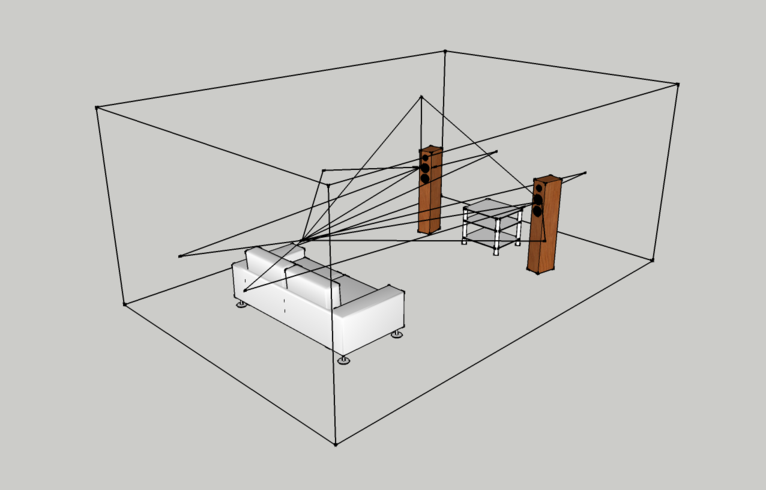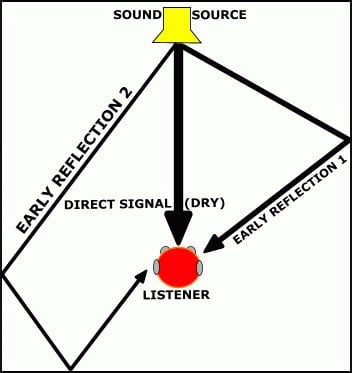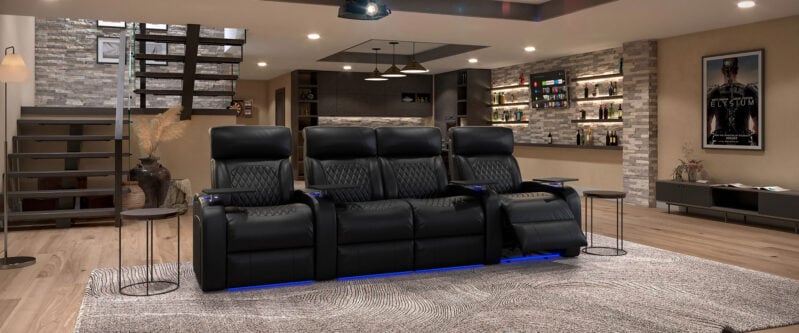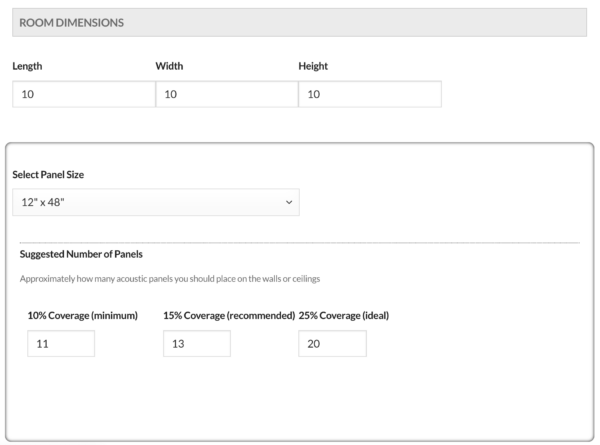Sound quality is an incredibly important factor when designing a home theater. You want to have a similar viewing experience that you would have in a professional movie cinema so you can get the full experience in the comfort of your own home. The secret to great sound is home theater acoustic panels and their placement.
Remember, it is not just the speakers that create great sound in a theater room. Most home theaters utilize several speakers to create surround sound. However, this creates a lot of sound waves which will reverberate around the home theater space.
If there are no soft surfaces to diffuse or dampen the sound, these waves will reverberate over each other. This can create a truly unpleasant experience and even muffle the sounds!
The best solution here is to use home theater acoustic panels to prevent sound waves from bouncing around. A home theater acoustic panel guide is a great resource to learn more about how acoustic panels work.
Let’s get into it.
The Placement of Acoustic Panels
How many acoustic panels do I need for a home theater?
Each home theater is unique based on the room’s construction – and these design elements influence where and how many acoustic panels you need for sound quality control. Before you start hanging up acoustic panels throughout a room, be sure that you consider some of these factors.
Height
The height of your walls will impact the size and number of panels that you require. Rooms with extremely high ceilings often have a lot of echoing. You can install acoustic panels for the ceiling to help with this.
Reflection Points
The primary purpose of an acoustic panel is to reduce the number of reflection points within a room that sound waves bounce off of. So, your first step will be to determine where those reflection points are based on your speaker positions.
You can estimate the reflection points by holding a mirror against the wall opposite of the speaker. Move the mirror until you are able to see the reflection of the speaker clearly: this is the reflection point.
It is also important to note that you will need to install thicker acoustic sound absorbing wall panels at the first reflection points. This will help to maximize sound absorption and deflect the reflecting sound waves.
Room Size
Most rooms are rectangular or square – but oddly shaped rooms or ones with lots of square footage may require more paneling. Larger rooms – especially ones with lots of empty space- will echo.
The length or width of a room should also be taken into consideration. Sound waves will eventually spread out and disperse as they travel. So, you will need to use large acoustic panels or cluster soundproof panels around each reflection point.
Speaker Systems
The types of speakers, as well as their arrangement, also play a role in where your acoustic panels need to be placed. If you have a central bar style speaker, then there will be fewer reflection points as the majority of the sound emits straight towards the audience.
However, if you use multiple speakers (such as two on each side of the screen or in the corners of the room), you will want to place panels at the reflection points from the speakers.
Essentially, the more speakers you have, the more acoustic panels you will need to control the sound waves from reverberating.
Spacing of Seating Arrangements
You also need to consider where the audience is seated in your home theater. For smaller theaters with only a couch or a few home theater-style seats in the center, the placement of acoustic panels should funnel the sound towards the middle of the room.
However, if you have a larger room with several rows of seats, you will want to create a consistent sound experience for everyone. This ensures that no seats are caught in the middle of clashing sound waves by placing panels nearby to dampen this reverberation.
Size of the Panels
Of course, the size of your acoustic panels will also influence the number that you need.
Most acoustic treatments are available in the following dimensions:
- 24” x 24”
- 12” x 48”
- 24” x 36”
- 24” x 48”
The size really depends on the surface area amount you want to be covered, as well as the design you prefer. You can place several smaller panels together or install large acoustic panels for spaces like blank walls or ceilings. Smaller panels are best for pinpointing reflection points, such as space around the speakers.


How Many Panels Do You Need?
The general rule of thumb is to use enough acoustic panels to cover 5-10% of a room. But if you have a large speaker system (such as surround sound) then you may want to bump that up to 15-30%.
You can use an acoustic panel size calculator to get an estimated number of panels based on your room’s dimensions and ideal coverage.
Here are all of the spots in a home theater where soundproof panels should be placed:
First Reflection Points – These are the two side walls across from the speakers where the sound waves are aimed.
Bass Traps in Front Corners – Bass traps are a thicker acoustic panel which control low-frequency sounds. There should be two in the front of the room where the screen and speakers are to absorb low, rumbling bass sounds.
Bass Traps in Rear Corners – Two or four bass traps should be placed in the rear corners to capture bass sound reflections.
Reflection Points on the Front and Back Wall – At least two acoustic panels should be placed on the front and back walls at reflection points.
Reflection Points on the Floor – If you have a hard floor, you may want to place some panels to soften the sound. Throw rugs will also do the trick.
Reflection Points on the Ceiling – Acoustic panels on the ceiling are not always necessary. But they can be helpful if the sound quality is still off after hanging panels throughout the room.
Bass Traps – If you really want to ensure that your home theater has fabulous acoustics, place additional bass traps at points where the walls intersect with the floor or ceiling. This ensures that no sound escapes and unpleasant reverberations are muffled.
Conclusion
Acoustic panels are an important yet often overlooked element to an ideal home theater setup. But this small touch can make a huge difference in the sound quality of a room – so you want to make sure that you have enough panels and have them spaced correctly!
Perhaps the most important component to a great home theater is the seats that you and your family lounge in. This is where Octane Seating comes in. We carry a vast variety of cinema-style seating options designed for home theaters. The professional designs will elevate any space without compromising on comfort or style!
Want to check out our collection or place an order?
Contact Octane Seating today!
Home Theater Seating
Decor & Accessories
- Octane Azure Seating
- Semicircle Recliner Theater Seating
- Red Crushed Velvet Movie Chairs
- Turbo Xl700 By Octane Seating
- Black And Gold Recliner
- Diamond Upholstery Chairs
- Magnum Lhr By Octane Seating
- Shopping For A Recliner
- Red Movie Theater Seats
- Zero Clearance Theater Seating
- Massage Recliner Chair Furniture





